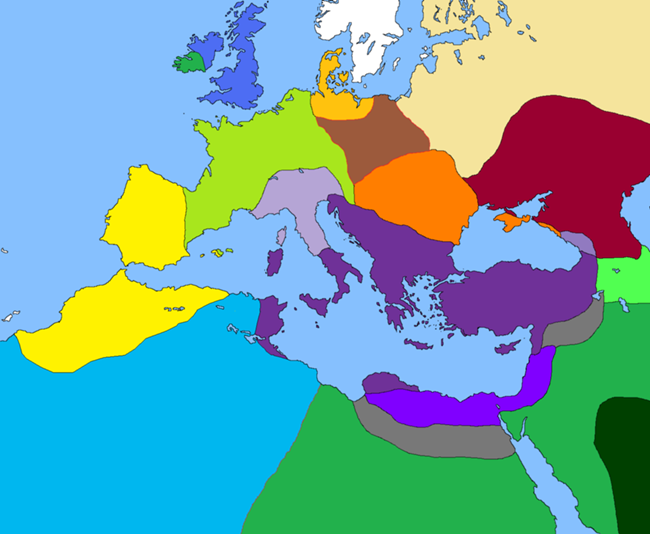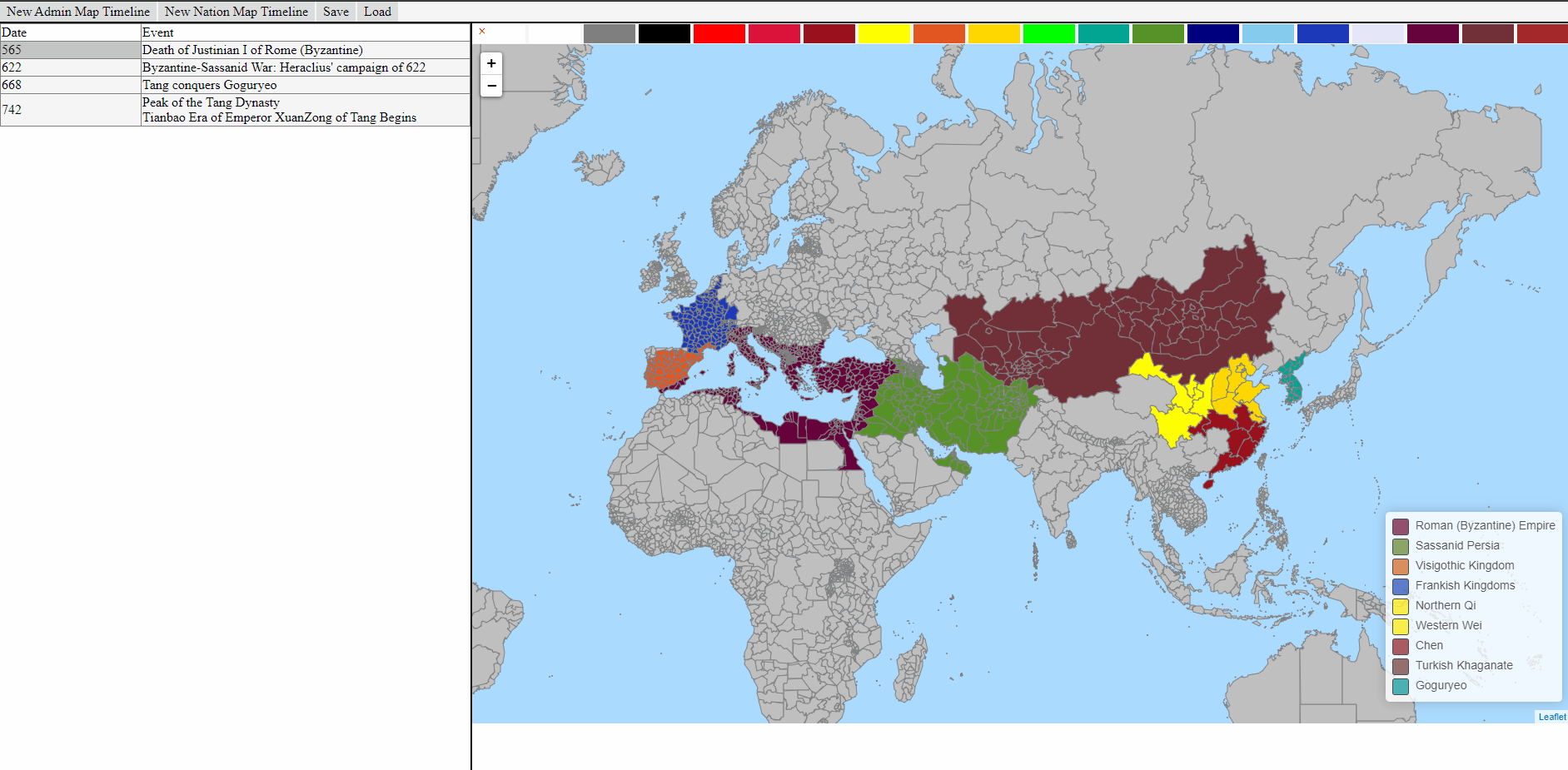Alternate History Byzantine Empire
Купить бумажную книгу и читать
По кнопке выше можно купить бумажные варианты этой книги и похожих книг на сайте интернет-магазина 'Лабиринт'.
Using the button above you can buy paper versions of this book and similar books on the website of the 'Labyrinth' online store.
- This Alternate History looks at what could have happened if the Turks did NOT regain Central Anatolia. This period, which spans 910 to 1680, is divided into four 'eras' of.
- Byzantine empire eastern roman empire fall of the roman empire migration period roman empire theodosius western roman empire Replies: 25 Forum: Alternate History Discussion: Before 1900.
Название: History of the Byzantine Empire: Vol. 1, 324-1453
Издательство: University of Wisconsin Press
The Byzantine Empire lasted for over a thousand years, and it was home to the largest and most powerful empire in the world. This is a timeline of its history.
Автор: Alexander A. Vasiliev
Год: 1958
Количество страниц: 382
Формат: PDF
Размер: 1,5 mb
Язык: English
“This is the revised English translation from the original work in Russian of the history of the Great Byzantine Empire. It is the most complete and thorough work on this subject. From it we get a wonderful panorama of the events and developments of the struggles of early Christianity, both western and eastern, with all of its remains of the wonderful productions of art, architecture, and learning.”
Купить бумажную книгу или электронную версию книги и скачать
По кнопке выше можно купить бумажные варианты этой книги и похожих книг на сайте интернет-магазина 'Лабиринт'.
Using the button above you can buy paper versions of this book and similar books on the website of the 'Labyrinth' online store.
Дата создания страницы:
By Tim Lambert
In the 4th century the Roman Empire split into two halves, east and west. The western part collapsed but the Eastern Roman Empire survived until the 15th century. It wasn't called the Byzantine Empire while it existed. The name Byzantine Empire was invented in the 16th century, after its demise.
The Foundation of Constantinople
Byzantium (today called Istanbul) was founded by the Greeks about 650 BC. Byzantium was built on a triangular peninsula on the very edge of Europe. it was separated from Asia by a narrow stretch of water called the Bosphorus. To the south of the peninsula lay the Sea of Marmora. On the north side lay an inlet called the Golden Horn.
History was changed in 324 AD when Emperor Constantine decided to build a new capital city for the Roman Empire. Constantine's experts drew up plans for a new fortified city on the site of Byzantium and work was almost complete after 6 years. The new city was inaugurated by Constantine on 11 May 330 AD. It became known as Constantinople.
However although the new city was supposed to be the capital of the Roman Empire a mixture of Roman and Greek culture held sway. Roman laws and administration applied but Greek literature and learning was dominant in the city.
Meanwhile as early as 286 the Roman Empire was split into two halves, East and West. The two sides were temporarily reunited by Constantine in 324. However, after 395 the Roman Empire was permanently divided into two halves and increasingly they went their separate ways.
The city of Rome was captured by a people called the Goths in 410 and the Western Roman Empire ended completely in 476 AD. However, the Eastern Roman Empire survived for a thousand years afterward. We sometimes call it the Byzantine Empire. However, the term Byzantine Empire was not invented until the 16th century more than a hundred years after it was conquered by the Ottoman Turks. The people of the empire called themselves Romans.
The Eastern Roman Emperor Theodosius (408-450) decided to strengthen the defenses of Constantinople. He built a great wall across the peninsula on which Constantinople was built about a mile across the west of the city's walls. The was about 15 feet thick and it was strengthened by nearly 160 towers.
However the wall proved vulnerable to earthquakes. In 447 when Attila the Hun was pillaging Southeast Europe much of the wall was destroyed by an earthquake. Fortunately, Attila was bribed to go away.
The Reign of Justinian
The great emperor Justinian reigned from 527-565. During his time Roman influences weakened in the Byzantine Empire and Greek ones grew stronger. Justinian tried to keep Latin as the official language of the empire so he became known as the 'last of the Romans'.
Justinian is famous for drawing up a code of laws known as the Justinian code in 529-533, which influenced law in many European countries. He also tried to conquer those parts of the empire that had been lost to the Germanic peoples. he sent his great general Belisarius to North Africa in 533 and he succeeded in conquering the Vandal kingdom in what is now Tunisia and Algeria. In 536 Belisarius invaded Italy. He advanced quickly and took Rome. Justinian's army also took the southern part of Spain.
In 540-561 Justinian also fought the Persians but with only modest success.
Justinian was also famous for building. His greatest building was the Church of St Sophia in Constantinople, which was built between 532 and 538. As well as architecture the other arts also flourished in the Byzantine Empire. The Byzantines made great mosaics, frescoes, jewelry, and illuminated manuscripts.
Meanwhile in 554 two Byzantine monks who traveled to China stole some silkworms. Until then only the Chinese had made silk. Afterward, silk was made in the Byzantine Empire as well.

After the death of Justinian the Byzantine Empire suffered some setbacks. In 568 a people called the Lombards conquered North Italy. Furthermore, the Byzantines lost their territory in Spain. In the east, the Persians fought another war against the Byzantine Empire in 602-628. In 614 they captured Jerusalem. The Persians then invaded Egypt and Asia Minor.
However in 610 a man named Heraclius became Byzantine Emperor. He was able to rally his troops and push back the Persians. By 627 he had recaptured the lost territory and in 628 he captured the Persian capital Ctesiphon.
Meanwhile during the reign of Heraclius ties with Western Europe weakened and Greek was finally made the official language of the Byzantine or Eastern Roman Empire.
However the Byzantine Empire now faced a new enemy - the Arabs. They began their attacks in 632 and in 638 they captured Jerusalem. In 639-642 the Arabs captured Egypt. In 698 they captured Carthage.
In 673 the Arabs began to blockade Constantinople by sea. However they failed to capture the city.
In 678 the Byzantines counterattacked with a new weapon called Greek fire (naphtha), a highly inflammable liquid. Earth, dust or cloth was soaked in Greek fire and fired from a catapult at enemy ships. Greek fire could also be held in a container of stone or metal, which exploded when it hit its target. It proved to be a deadly weapon. Greek fire was invented about 650 BC by Callinicus of Heliopolis. However, in the 9th century, the Arabs and other enemies of the Byzantines learned to make it.
In 716 the Arabs blockaded Constantinople. The blockade lasted for a year but it was broken by a Byzantine fleet.
However at that time the Byzantine Empire was riven by disputes over religion. The Emperor's claimed to be God's representative on earth and they were not afraid to intervene in religious arguments.
In the 8th century paintings of Jesus, Mary or the saints were common. However in the 8th and early 9th century there were many people who disapproved of icons and many of them were destroyed. (Giving us our word iconoclast). Yet after 843 icons became popular again.
Achievements Of The Byzantine Empire
The Greatness and Decline of the Byzantine Empire
In 867 Basil I murdered the previous emperor Michael III, known as Michael the Drunkard and succeeded him as emperor. He founded the Macedonian dynasty and under it the Byzantine Empire flourished. The Byzantines expanded their empire at the expense of the Arabs. However, the Macedonian dynasty ended in 1056 and the Byzantine or Eastern Roman Empire began a long slow decline.
Meanwhile in 1054 the Eastern Orthodox Church formally separated from the Western Church.
In the East the Byzantines faced a new enemy. A people called the Seljuk Turks captured Baghdad in 1055. They then turned on the Byzantine Empire. The Byzantines were decisively defeated at the Battle of Manzikert and they lost most of Asia Minor.
Emperor Alexius appealed to Western Europe for help. Pope Urban II preached a crusade to recapture the Holy Land (Israel). The Arabs were tolerant and allowed Christians to make journeys called pilgrimages to Jerusalem. However, the Seljuk Turks were intolerant and persecuted Christians. So the idea of a crusade found much support.
A Western European army arrived at Constantinople. However, the allies disliked each other. The Byzantines regarded the Westerners as uncouth and ignorant while the Westerners regarded the Byzantines as effete and too fond of luxury. Nevertheless, the Crusaders went on to capture Jerusalem in 1099.
In the 12th century there were two more crusades. In 1202 the fourth crusade was organized. However in 1204 when the Crusaders were underway they turned and attacked Constantinople. They soon captured the city and looted it. For the next 55 years, European ruled Constantinople.

Byzantine Empire People
However some parts of the Byzantine Empire remained independent and were ruled by emperors in exile. Gradually the emperors in exile won back territory and in 1261 they recaptured Constantinople. Nevertheless, the Byzantine Empire never recovered.
From the end of the 13th century Byzantium was threatened by a new people from Central Asia, the Ottoman Turks. They gradually gained strength and Byzantium dwindled. By the time of Emperor Manuel II (1391-1425) the Byzantine Empire consisted of Constantinople and small parts of Greece and Asia Minor.

However Constantinople finally fell in 1453. The Sultan, Mohammed III had cannons and he used them to good effect. On 7 April 1453, they began firing at the walls. Gradually they chipped away and made breaches in the walls. Finally, on 29 May 1453, the Turkish army rushed through the breaches and took the city of Constantinople. The Byzantine or Eastern Roman Empire came to an end.